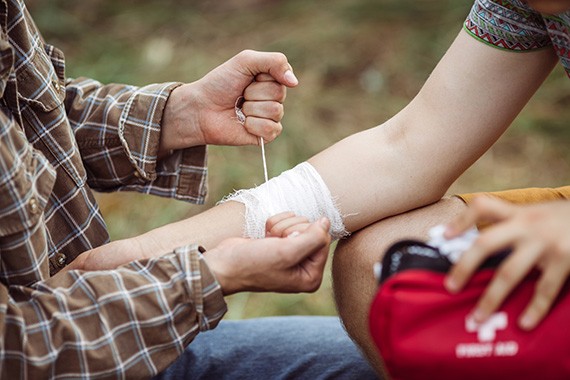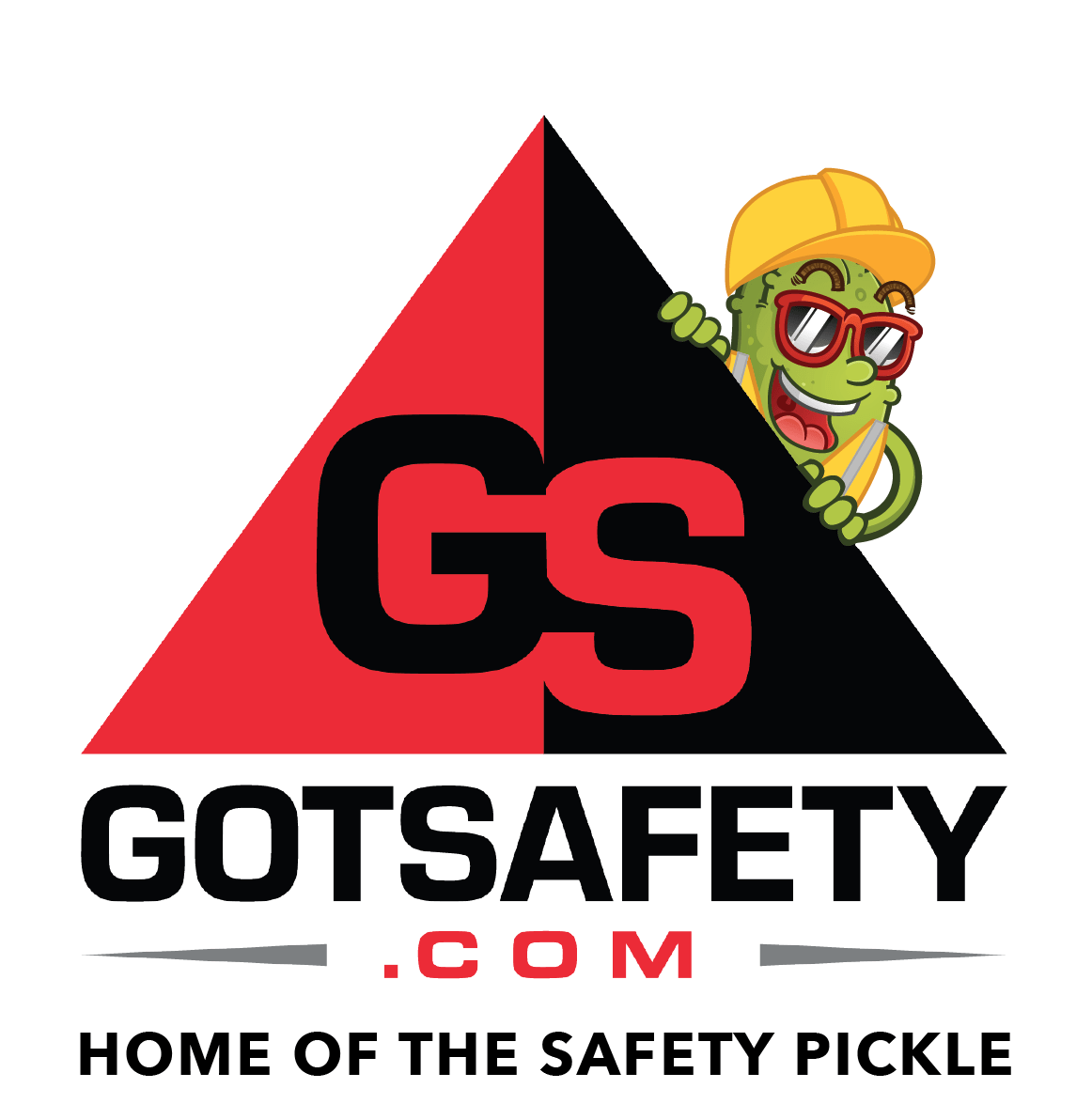Basic First aid Training Video
Whether you are at home or at work, there is always the chance that a medical emergency (such as a heart attack, cuts, burns, etc.) may occur. Medical emergencies can range from minor to major incidents. Basic first aid knowledge can help you be prepared for helping with a variety of medical emergencies, and help you assist victims while emergency medical services are contacted and arrive. In this lesson we will cover the definition of first aid, common situations where first aid may be required, and what to do when first aid is needed.
For more information on first aid, please refer to our “First Aid: Bleeding Control”, “First-Aid: Shock- What is it & How to Treat It”, “First Aid: What is it”, and First Aid Kit: Where and What” lessons.
What is first aid?
The term “first aid” is defined as “The emergency care or treatment given to an ill or injured person before regular medical aid can be obtained.”
According to OSHA, first aid often consists of a one-time, short-term treatment that requires little technology or training to administer.
The AIMS of first aid
When providing first aid, it aims to do three things:
- Preserve Life
- Prevent further harm
- Promote Recovery
Common Situations where First Aid may be Required
Common Accidents and emergencies where first aid may be required include, but are not limited to:
- Anaphylaxis or anaphylactic shock
- Bleeding wounds
- Burns and scalds
- Choking
- Drowning
- Electric Shock
- Fractures or broken bones
- Heart Attack
- Insect Bites or Stings

What to do when First Aid is needed
Note: If you do not feel comfortable providing first aid, seek assistance from others who may feel more comfortable or who are first aid and CPR certified. People can receive training and certification for first aid and CPR from the American Red Cross or similar organizations.
Assessing the situation:
Before you provide any first aid assistance to a victim, you should assess the situation to assure your safety. When assessing a situation, you should do the following:

- Visually assess the scene for any identifiable hazards or other potential dangers. Hazards and dangers can include, but are not limited to:
- Fires
- Downed Power Lines
- Flooding or fast-flowing water
- Chemical Fumes
- Falling or Fly Debris
- Vehicles
- Violent People
- Aggressive Animals
- Identify how many victims there are and either contact or have someone else contact 9-1-1.
- If there are multiple victims with differing degrees of consciousness and injuries, victims may need to be triaged.
- If you have deemed it safe to provide aid, either retrieve an available first aid kit or have someone retrieve the first aid kit for you.
Responsive Victims:
Once you have deemed it safe to aid, you should do the following:
- Check the victim or victims to see if they are conscious and alert. To do this you can:
- Ask questions to see if the person responds
- See if they person responds to touch
- See if the person responds to pain
- If the victim or victims appears responsive and is breathing safely, you should conduct a rapid whole-body check. This includes checking for:
- Open Wounds
- Deformities
- Medical alert tags advising of underlying
conditions that the victim may have - Swelling
- Keep the Victim Calm
Unresponsive Victims:
If a victim is unresponsive, you should follow the first aid ABCs
- Inform of the 9-1-1 operator about any identified wounds or other injuries that you noted during your whole-body check.
- Provide as much information as you can as the 9-1-1 operator can rely important information about the victim’s condition to the EMS providers.
- Follow the 9-1-1 operator’s instructions if they are provided to you.
- If available, use personal protective equipment (such as gloves, eye protection, pocket masks) when
providing treatment. - If you are not the speaking with or being provided instructions by the 9-1-1 operator, continue to
provide care to the best of ability until the emergency medical services (EMS) arrive. - Wash your hands thoroughly after providing treatment
First Aid ABCs

A for Airway
A blocked Airway can make it more difficult for a victim to breath. The airway can be kept open by doing the following:
- Place one hand on the victim’s forehead.
- Gently tilt the victim’s head back.
- Carefully raise their chin.
B for Breathing
Once the airways have been opened up, determine if the victim is breathing normally. You should do this by:
- Placing your ear directly above the person’s mouth while looking down at their body.
- Checking for the following breathing signs:
- Sound of breathing
- Feeling the victim’s breath on your cheek
- The Victim’s chest moving up and down
- These steps should be continued for only 10 seconds
- If the victim is not breathing, rescue breathing should be performed.


C for Circulation/Compression
Check to see if the person shows signs of blood circulation such as a pulse and/or a difference in skin colorization from normal. If you can’t find a pulse and you are trained in CPR technique, you should begin CPR on the victim until help can arrive.
If you are not trained in CPR, you should seek immediate assistance by yelling for help or sending someone to seek help while you stay with the victim.
Conclusion
To conclude, knowing how to provide basic first aid can help you stay calm when there is a medical emergency. How you respond to an incident will depend on your level of confidence in your skills and the responsive or unresponsive state of the victim. First aid can help buy the victim time while emergency medical services arrive. If you have questions about first aid procedures or your company’s first aid kit, please speak with your supervisor.

